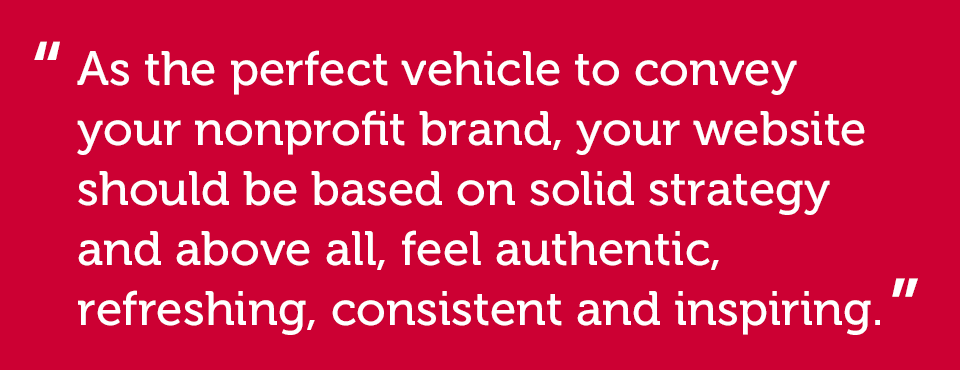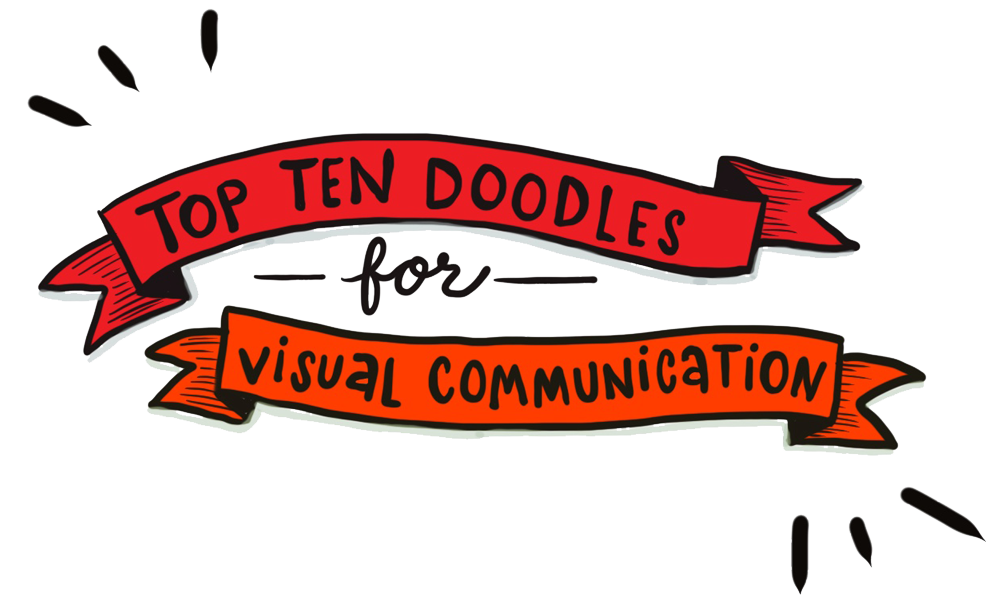An organization’s brand is everything it stands for – its vision and values, and the emotional connotations it inspires in everyone who comes in contact with it.
Since your website is likely the primary way in which prospective audiences and donors learn about your organization, it’s your best brand ambassador. The information on your website should be presented in a clear, unambiguous way so supporters are engaged, not lost and confused. That information can be conveyed in two ways, primarily: through words, and through visuals. And both types of content need to be consistent and resonant with your nonprofit’s brand.
Brand benefits
It’s easier than ever to use cheap or free technology to get a good-looking website, logo, or email newsletter. However, there are more than 1.5 million nonprofits currently in the U.S., and a lot of their websites look, feel, and sound the same. “Organizations may see themselves as distinctive because they are caring, sympathetic, trustworthy, and all that other nonprofit goo,” claims Adrian Sargeant at the Center on Philanthropy at Indiana University – but his research finds that many other nonprofits share these traits as well. Instead, strive to stand out by being authentic, refreshing, consistent, and inspiring.
Establishing a nonprofit brand is an investment that can, admittedly, take time, effort, and money. But it’s well worth it – strong nonprofit brands enjoy expanded visibility and improved fundraising results. Most importantly, it will help you stand apart from the crowd – so people ‘get it’.
Strategy first
The question to ask before proceeding with any element of your online brand is, do you have a strategy for what you’re creating? Whether it’s your website, email newsletter, video or annual report, while working on these items, ask yourself, which of these designs and messages most accurately reflects our positioning? This makes the process strategic, not something subjective, such as,“I like this because I like this shade of orange”.
Heath Shackleford, of goodmustgrow.com says, “Strategy leads to things like a distinctive and authentic point of view, the creation of compelling content, and the development of engaged communities. Without strategy, you are just making stuff that may or may not “look pretty.””
Where design fits in
Flashy graphics seem compelling, but unless they relate to your brand’s personality, they won’t resonate with your audiences. Having said that, studies from the Visual Teaching Alliance show that 65 percent of the population are visual learners, and that 90 percent of information that comes to the brain is visual.
While a brand is so much more than a logo, a logo is a very important part of a nonprofit’s brand. Nonprofits especially benefit from having a strong logo and tagline that communicates a clear brand promise and serves as the foundation for all marketing – especially on a website.
Other design elements such as color, typography, placement and graphic style all play a substantial role in how your brand is conveyed on your website:
- Color. Develop a consistent color palette that can be used for the logo as well for other marketing, fundraising and communications materials
- Typefaces. Adopt a system of typefaces that can be used for all of your marketing materials. Set guidelines for using them in a variety of typical layout formats, including:
- Large headlines
- Text
- Subheads
- Callouts
Donor-centric
When it comes to creating successful nonprofit websites, it’s not really what feels right to you, the board, and staff (and definitely not about the Executive Director and her love of the color orange). Start with your audiences’ needs and preferences. For most organizations the biggest chunk of people you’re looking to connect with are those giving you money. As Jeff Brooks says on his website Future Fundraising Now, “It’s about donors. If you need to raise funds from donors, you need to study them, respect them, and build everything you do around them.”
With this is mind, here are some tips for keeping your donors happy on your website:
- Make sure the donation page is easy to find and doesn’t require extra clicks to get to
- The design of donation buttons are an important call to action. Make sure these buttons project sophistication or are compelling in some other way that is commensurate with your brand. If yours look like clip art from 2001, improve their design to instill in people a greater sense of confidence in their giving choices
- This handy infographic depicts the key elements of an effective online donation page.
…
Here are 6 additional suggestions for keeping your website – and all your online communications – in line with your brand:
- Identify your Brand Attributes. Your brand personality should set the tone across all communication vehicles. Are you serious or fun? Quiet or loud? Cutting edge or conventional? Grassroots or establishment? Hi-tech or homemade? Subdued or bright?
- Evoke Emotion. Infuse your writing with feeling. Studies show that nonprofit brands that stimulate an emotion—anger, or laughter, for example—provide differentiation that can increase the size of donations
- Avoid Jargon. Not sure if your writing is free or full of jargon? Check out this great jargon finder.
- Stick with a Content Management System. Since most NPO brands are in a constant state of evolution – adding programs, partners, expanding, contracting, changing focus, direction, audiences, etc – your website should be dynamic and evolve too. Use a CMS with an easy-to-use section for administrators
- Employ Calls to Action. Encourage visitors to do stuff on your site. These ‘calls to action’ should be evident on each page. For example, at The Michael J. Fox Foundation for Parkinson’s Research, “donate”, “fundraise”, and “participate” are all clearly positioned on the homepage and other calls to action are evident on most pages
- Use Images to Tell Stories. Good photos and videos tell stories, and stories are engaging. Consider how images can be employed strategically to communicate a specific point, not just as decoration. Kiva uses compelling photography to tell their members’ stories
…
As the perfect vehicle to convey your nonprofit brand, your website should be based on solid strategy and above all, feel authentic, refreshing, consistent and inspiring. A strong nonprofit brand sets you apart from other organizations in your sector; helps you communicate better (both internally and externally); and increases an understanding of the great work you’re doing to make the world a better place.

